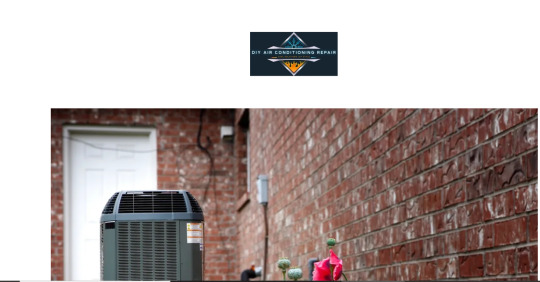Text

Diyairconditioningrepair
Welcome to our DIY Air Conditioning Repair Course Are you tired of sweating through the scorching summer days or paying hefty repair bills to keep your air conditioner running smoothly Look no further, as we have designed this comprehensive course to empower you with the knowledge and skills needed to fix your cooling system with confidence.
AC compressor repair
0 notes
Text
Troubleshoot Your Way to Comfort: DIY Thermostat Tips and Tricks
Your thermostat plays a crucial role in maintaining comfort and energy efficiency in your home. A malfunctioning thermostat can lead to temperature fluctuations, increased energy bills, and discomfort. However, many thermostat issues can be resolved with simple DIY troubleshooting techniques. This guide provides essential tips and tricks for troubleshooting your thermostat to ensure optimal performance and comfort.
1. Check Power Supply:
The first step in thermostat troubleshooting is to check the power supply. Ensure the DIY thermostat troubleshooting has power by checking the circuit breaker or replacing batteries if applicable. A lack of power can cause the thermostat to malfunction or display inaccurate readings.
2. Verify Settings and Programming:
Check the thermostat settings and programming to ensure they reflect your desired temperature settings and schedule. Verify that the thermostat is set to the correct mode (cooling, heating, or auto) and that the programmed schedule matches your daily routines.
3. Calibrate Temperature Reading:
If you notice temperature discrepancies between the thermostat and actual room temperature, calibrate the thermostat's temperature reading. Use a thermometer to measure room temperature and adjust the thermostat accordingly to ensure accurate readings.
4. Clean and Maintain Thermostat:
Dust and debris can accumulate on thermostat sensors, affecting accuracy and performance. Use a soft brush or cloth to clean the thermostat and sensors gently. Regular maintenance keeps the thermostat functioning optimally.
5. Check Wiring and Connections:
Inspect thermostat wiring and connections for loose or damaged wires. Tighten connections and replace damaged wires or terminals as needed. Poor connections can cause erratic thermostat behavior and system malfunctions.
6. Test Heating and Cooling Systems:
Verify that both heating and cooling systems are working correctly. Set the thermostat to different temperature settings and monitor system operation. If one system isn't functioning, it could indicate a problem with the thermostat or HVAC system.
7. Reset and Reconfigure:
If troubleshooting steps don't resolve issues, consider resetting the thermostat to factory settings. Refer to the manufacturer's instructions for resetting and reconfiguring the thermostat. Resetting can resolve software glitches or configuration errors.
8. Upgrade to a Programmable Thermostat:
Consider upgrading to a programmable thermostat for enhanced control and energy savings. Programmable thermostats allow you to set schedules for heating and cooling based on your daily routines, optimizing comfort and efficiency.
9. Monitor System Performance:
After troubleshooting and making adjustments, monitor your HVAC system's performance. Check for consistent temperature control, proper cycling of heating and cooling systems, and accurate temperature readings on the thermostat.
10. Seek Professional Help if Needed:
If DIY troubleshooting doesn't resolve thermostat issues or if you're unsure about complex repairs, seek professional help. HVAC technicians have the expertise to diagnose and repair thermostat problems effectively.
By following these DIY thermostat tips and tricks, you can troubleshoot your way to comfort, improve energy efficiency, and ensure a comfortable indoor environment. Regular maintenance and monitoring help prevent thermostat issues and keep your HVAC system running smoothly.
1 note
·
View note